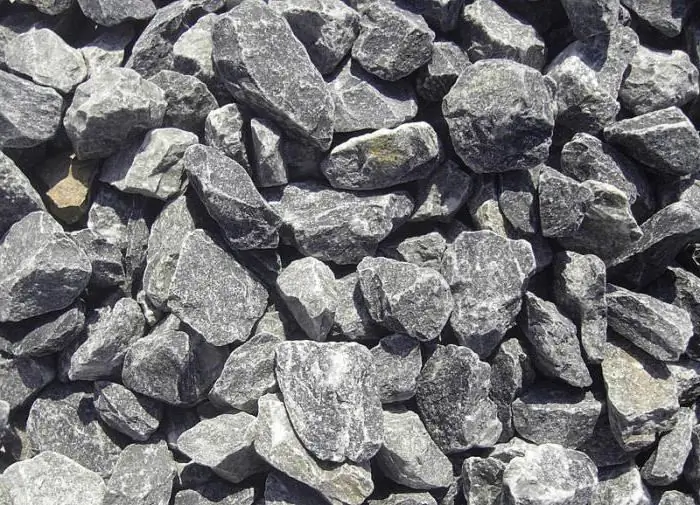2026 Author: Howard Calhoun | [email protected]. Last modified: 2025-01-24 13:10:26
Building material produced by crushing various hard rocks or processing industrial waste is called crushed stone. This inorganic bulk material, which looks like a small chipped stone, is widely used in many areas of human activity. Various types of crushed stone, depending on its physical and technical characteristics, are used in the capital and restoration construction of buildings, roads, railways, the production of reinforced concrete products, and landscape planning.

Varieties of crushed stone and where each type is used
Crushed stone is classified by origin. This is, first of all, the type of rock from which it is made. Manufacturers always provide the necessary information. The origin of crushed stone characterizes its qualities, and hence the scope of its application. The main types of crushed stone by origin are divided into:
- Granite. This is one of the most durable types of gravel. It is obtained from hard rock, one of the most common on Earth. Granite rock refers to igneous (primary) rocks and isejected to the surface and solidified magma. Granite is formed from a number of crystals: quartz, spar, mica, etc. It has a red, pink and gray color. Gravel types of crushed stone are used for construction and landscape planning, road and railway equipment, drainage, decorative design.
- Gravel. Crushed stone produced by sifting or crushing rock. It has almost the same strength as granite, but has a lower radiation background and is cheaper. Gravel types of crushed stone are used for concrete, reinforced concrete production, foundation work and road construction.
- Limestone. This crushed stone is a product of crushing sedimentary (secondary) rock - limestone, the main component of which is calcite. Limestone and dolomite crushed stone is significantly inferior in strength to gravel and granite. It is used in road construction and production of reinforced concrete products.
- Slag. This is a product of crushing waste from metallurgical production. The main advantage of such rubble is a relatively low cost. Most often used as a binder for the preparation of concrete.
- Secondary crushed stone. The product of crushing construction debris - brick, concrete, asph alt. Such crushed stone is inferior in all characteristics to products made from natural materials, but is still widely used as an aggregate for concrete, road facilities, strengthening weak soils, and landscaping.

Crushed stone production
Crushed stone production consists of severalstages:
- mining rock;
- transportation (if necessary);
- several stages of crushing;
- sorted by fractions.
The main stage of crushed stone production is crushing. The shape and size of the resulting grains depend on this operation. Crushing is carried out in 2-4 cycles on special equipment - crushing machines. Depending on the grinding method, there are different types of crushed stone crushers:
- Jaw - installed at the first stage of crushing. The principle of operation is shockless crushing of rock between two plates.
- Centrifugal. These crushers are most often used for the production of fine crushed stone of any hardness used in road construction.
- Cone crushers are one of the most expensive crushed stone machines. Their main advantage is versatility. Such crushing machines can produce crushed stone of any fraction and even artificial sand.
- Rotary. In these machines, the crushing of rock is carried out by impact energy. The rock being filled at high speed repeatedly hits the impact plates and crushes until it falls into the calibrated exit slots.
At the last stage, before shipping products to consumers, crushed stone is divided into fractions. The operation is carried out on equipment called a screen. These machines can be stationary or suspended. During the screening process, the crushed rock passes through several vibrating sieves with holes of various diameters. On each of them crushed stone is separatedestablished faction.

Crushed stone fractions
After crushing grains of various sizes are obtained. For further implementation, crushed stone is sorted based on particle size. Fraction - the maximum allowable value of a single grain (stone). Types of crushed stone according to fractions are divided into main and accompanying. The main ones are from 5 to 70 mm in size. The sizes of the accompanying fractions and elimination - from 0 to 40 mm. For special applications, types of crushed stone of special fractions are produced: 70-120 mm and 120-150 mm.
Crushed stone is the main natural stone material. Granite crushed stone 5-20 mm in size is in the greatest demand. Such material is used in the production of concrete, asph alt and reinforced concrete products. Granite crushed stone of large fractions (20-45, 20-65, 25-60, 40-70 mm) is also quite in demand on the market, it is used for railway embankments, in construction when strengthening foundations and laying foundations, as a cushion layer in the construction of roads.

Gravel and crushed stone
For the production of concrete, such large aggregates are used: natural stone crushed stone, gravel and gravel crushed stone, aggregate from blast-furnace slag. The gravel used in construction can be mountain, river and sea. The last two, due to their smooth polished surface, have the worst adhesion. Stone crushed stone for construction is produced by crushing natural rocks. These types of crushed stone have a rough surface and an acute-angled shape, due to which they havebetter than gravel, adhesion to binders. The quality of gravel and crushed stone is characterized by:
- strength;
- size and shape of grains;
- frost resistance;
- content of harmful impurities.

Physical properties of crushed stone
The physical characteristics of the material are given much more attention than the origin. It is on the basis of these properties of crushed stone that the scope of its use is determined. All types of crushed stone are characterized by the following main indicators:
- strength;
- flakiness;
- frost resistance;
- water absorption;
- bean shape;
- radioactivity.

Flakiness of rubble
In crushed stone, the content of lamellar and needle grains is normalized, whose thickness or width is three times greater than the length. This is an important characteristic, which is first of all paid attention to when using crushed stone in construction and the production of reinforced concrete products. If there are a large number of lamellar and needle-shaped grains in the total mass of crushed stone, the concrete mixture may turn out to be of poor quality and require additional compaction. A large number of grains of this shape leads to the formation of numerous voids. According to the percentage of lamellar and needle grains in the mass, crushed stone is divided into groups:
- I - up to 15%, cuboid;
- II - 15-25%, improved;
- III and IV groups of usual flakiness - 25-35% and 35-50%respectively.
Cuboid crushed stone is most suitable for concrete preparation due to the absence of problems with voids.
Strength of rubble
This property of crushed stone is characterized by the strength limit of the original rock. The strength of this natural stone material is determined by imitation of mechanical effects on compression, crushability during crushing in the cylinder, abrasion in the rack drum. Granite has the highest strength. The most demanded is crushed granite M1200 with a content of stones of weak rocks no more than 5%. Its main application is the construction of foundations, the production of high-strength concrete and load-bearing structures.

Frost resistance of the material
The property of a material to maintain integrity, strength and mass after repeated freezing and thawing is called frost resistance. This characteristic is especially important for crushed stone used in the construction of foundations in regions with low temperatures. Materials with high density and low porosity have high frost resistance.
Activity of rubble radionuclides
One of the most important characteristics of any material used in construction is the radioactivity of rubble. It determines its suitability for all types of construction work and must comply with sanitary and epidemiological standards, which is confirmed by the relevant conclusions and certificates. The first class of radioactivity of high-strength crushed stone corresponds to a value of less than 370 Bq/kg. For the second class - more than 370Bq/kg.
Recommended:
Loose material (sand, crushed stone): production and sale

Sand and crushed stone are used as bases for various buildings and landscaping, as well as aggregates for concrete
Crushed stone: types, characteristics, applications and reviews
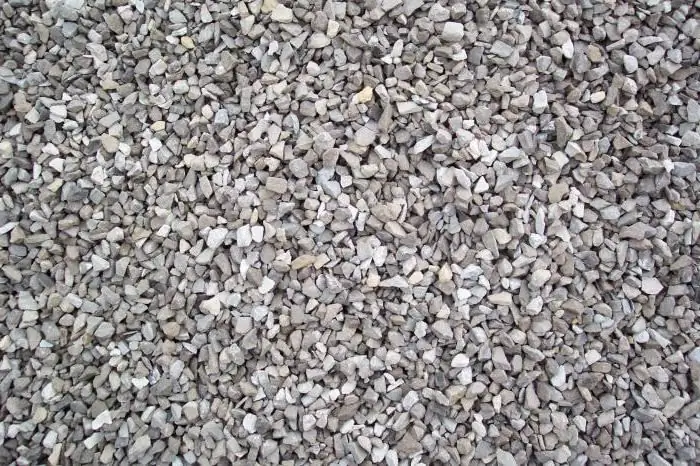
Crushed stone, the types of which will be described in more detail below, is a building material obtained as a result of the initial grinding and subsequent sifting of rocks
Slag crushed stone: description, characteristics, use
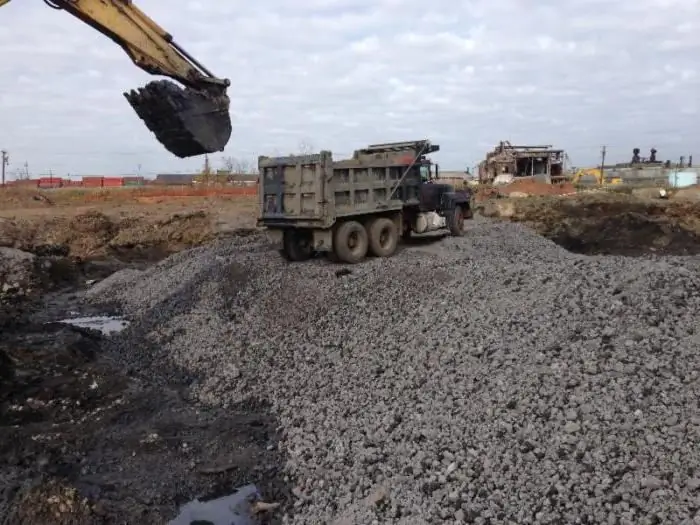
Crushed slag is a very cheap building material. According to the characteristics, it differs slightly from granite, both for better and for worse. Used in the construction industry
Crushed-stone-mastic asph alt concrete (ShMA): GOST, properties and characteristics
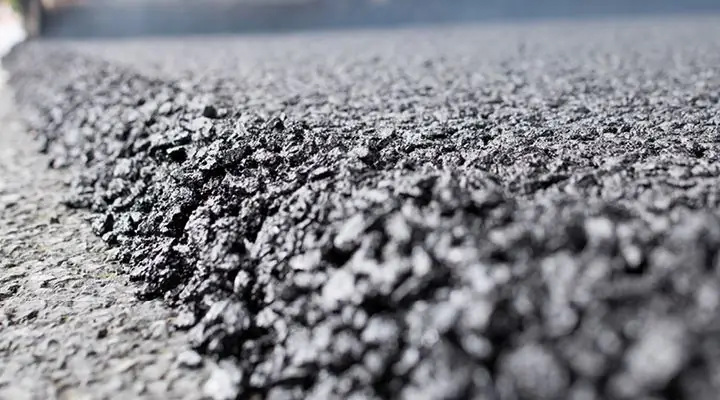
According to GOST, roads must be laid using asph alt concrete, which contains a stabilizing component. Its properties and appearance are of great importance for improving the quality of the final material, its transportation, preparation and installation. Additives are structuring fibrous. They allow you to maintain uniformity and help keep hot bitumen on the surface of crushed stone
Density of crushed stone - gravel, granite, limestone and slag. Bulk density of crushed stone: coefficient, GOST and definition
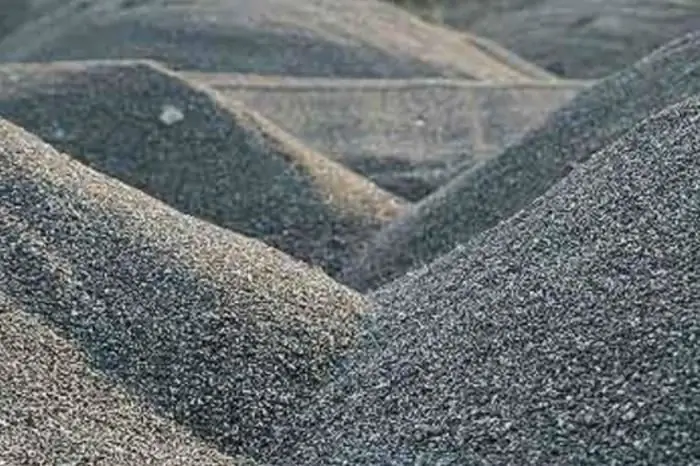
Crushed stone is a free-flowing, inorganic and granular material obtained by artificial crushing. It is divided into primary and secondary. This is an important fact. Primary - the result of processing natural stone: pebbles, boulders, pumice and other materials. Secondary is obtained by crushing construction waste, such as concrete, asph alt, brick. In this text, we will consider in more detail such a property as the density of crushed stone

